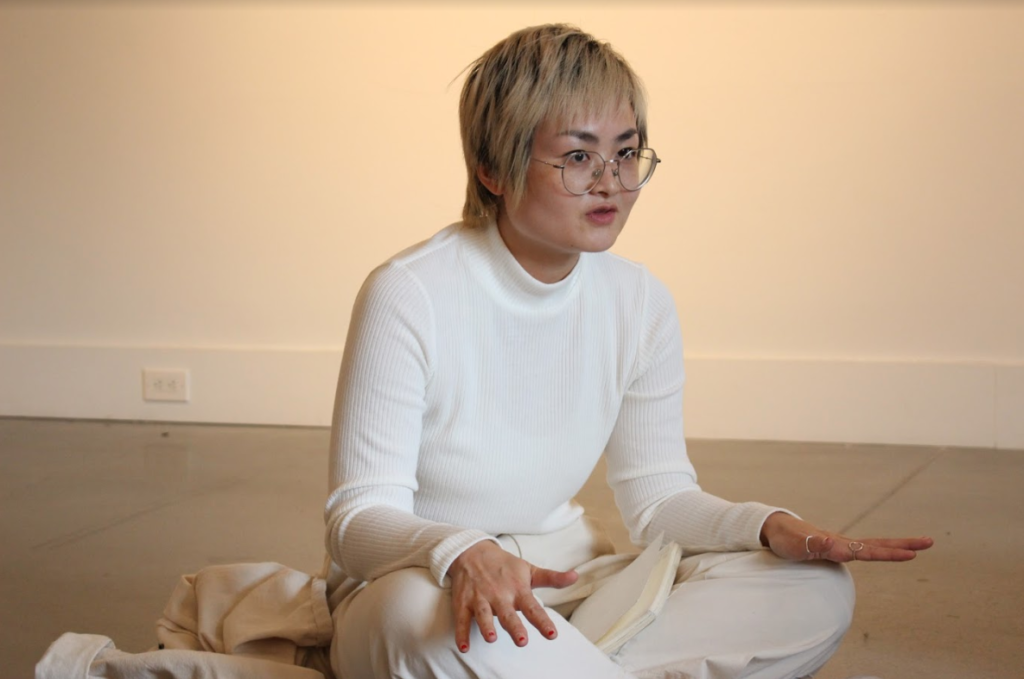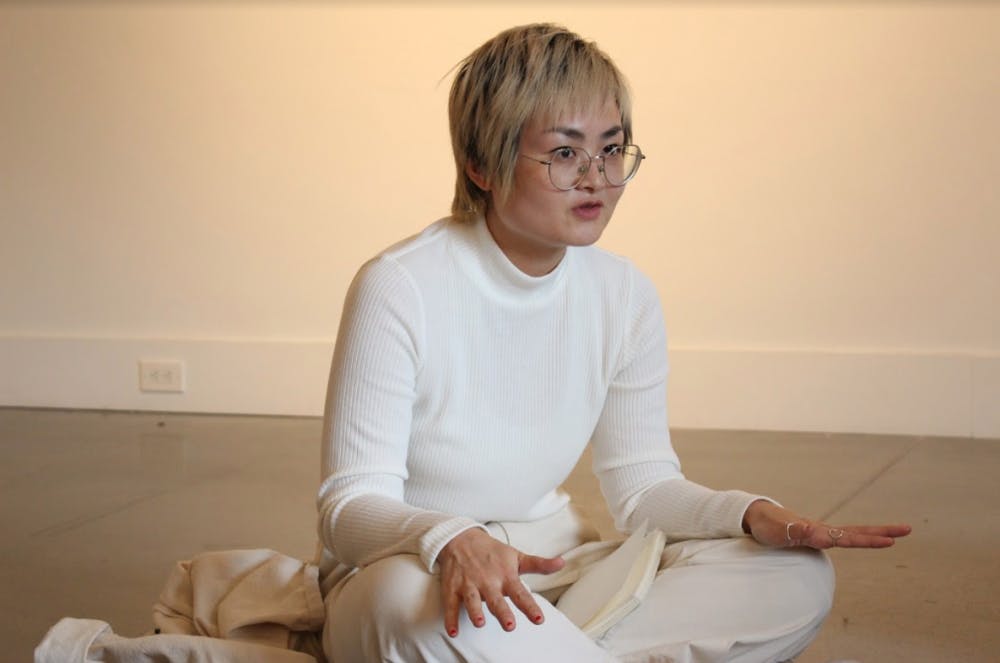By Esther Morales
Correspondent

Yixuan Pan, a Chinese-born artist based out of Philadelphia, hosted a Visual Scores workshop on Friday, Oct. 25, at the College’s Art Gallery.
“A project that reimagines our language and communication through alternatives to the Western systems of musical notation and performance,” Pan said, in describing the exhibit, which will serve as the second workshop out of three.
Pan researched the development of 20th-century broadcasting and mass communication in relation to how it brings people to a place where they can connect to one another and therefore have empathy.
“Everything started from my experience of being a foreigner in this country, being in an unfamiliar situation where I have to learn to use a language that I’m not super comfortable with and using that as a window to see how other people will think about something they don’t really know,” Pan said.
In explaining the first workshop that took place about two weeks ago, specifically involving music students, Pan described the theme as “listening, synchronizing, how to do things together and also the difficulty and the challenges of doing that.”
Students had the opportunity to express themselves through creating art themselves in a series of translation exercises conducted by Pan.
The Visual Scores workshop started off by taking a look at the four basic properties of sound –– pitch, timbre, loudness and duration. Students had the opportunity to describe and give examples of each to create a clearer understanding amongst the group and to Pan herself.
A visual score, also known as graphic notation, is the representation of music through visual symbols different from traditional music notation.
In the spur of the moment, Pan decided to have students listen to the live music that could be heard being played from the room over, where a separate event was taking place.
Pan tasked students to interpret the sounds they heard by using oil pastels on paper to draw their own translation of sounds, whether that was represented by a line, shape, or the use of different colors.
After creating their visual scores, students regrouped and shared their different images of what they heard, emphasizing how differently people can interpret the same experience.
The next exercise Pan conducted was based on text found in the Sarnoff Collection.
“They are all advertisement language from the 1940s from the radio,” Pan said. “They’re very old-fashioned, but also very romantic and also very relevant.”
The untitled poem used spoke of a utopia, describing the future from the past, one where everyone could communicate with one another. Pan described the tone for the work as “almost propaganda-like.”
Based on her provided text, Pan said she wanted students to “design how the poem can be seen through another person’s instrument, the instrument as their body.”
Similar to the previous exercise, students were assigned lines of the poem and took to their pastels and paper to create a visual score for their piece.
Pan provided noise-canceling headphones and encouraged students to spread out facing away from each other as they created their visual scores so that each was their own original and creative piece of art.
The visual scores created for the lines of the poem were placed in order of the flow of the text. It created an overall image where the goal was to showcase each student’s own personal translation and creative thought process.
In discussing her final workshop, Pan said it will feature an artist talk and musical performances from participators interpreting the visual scores created in this workshop as to how the poem worked with can be sung.
“There will be a live performance, communicating with the audience and how we translate different people’s ideas, how we read their instructions and that becomes something else,” she said.







